Among the masters at the Ferrari and Lamborghini museums
The designs are dazzling at three automobile museums in Italy. And then you get to drive
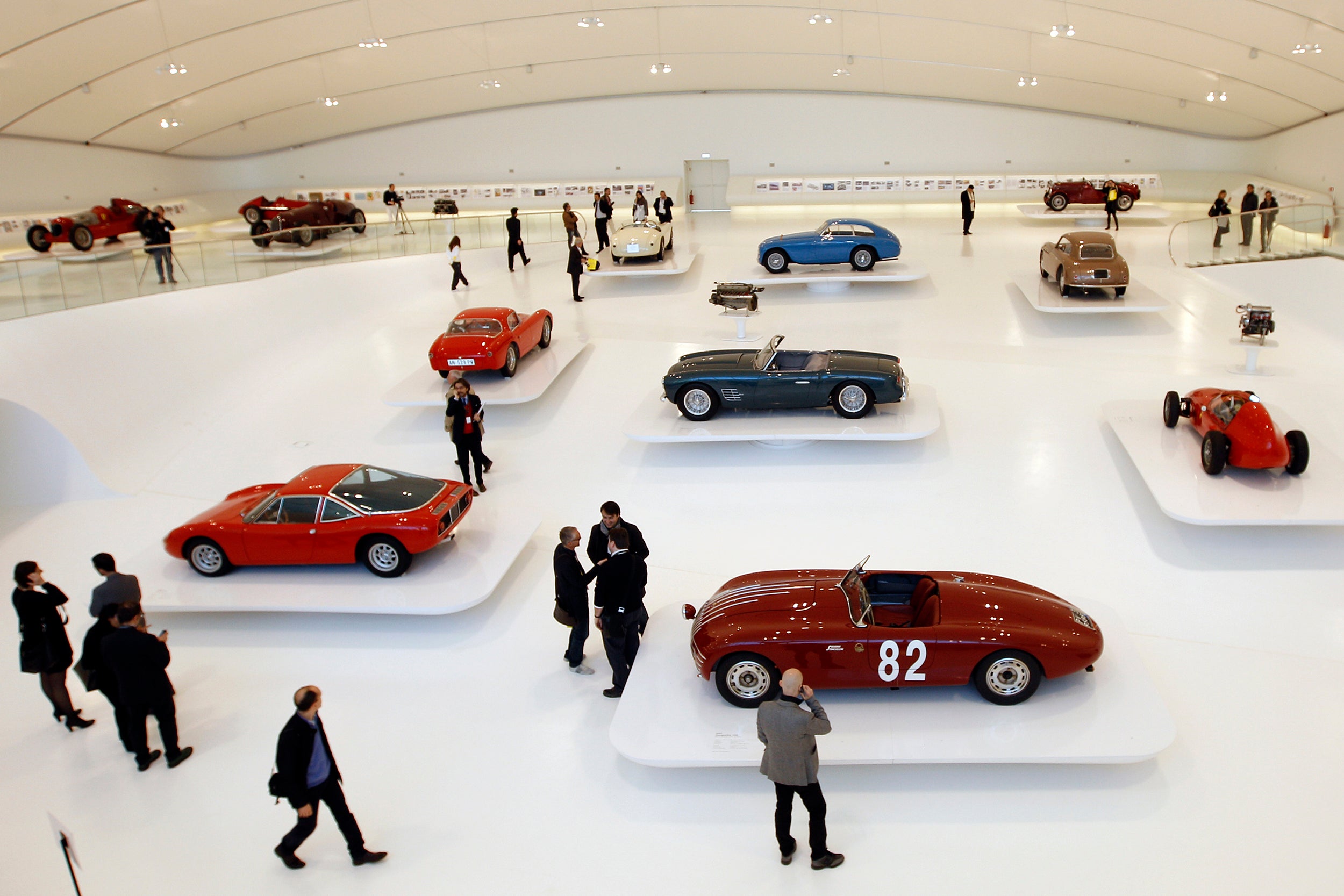
Your support helps us to tell the story
From reproductive rights to climate change to Big Tech, The Independent is on the ground when the story is developing. Whether it's investigating the financials of Elon Musk's pro-Trump PAC or producing our latest documentary, 'The A Word', which shines a light on the American women fighting for reproductive rights, we know how important it is to parse out the facts from the messaging.
At such a critical moment in US history, we need reporters on the ground. Your donation allows us to keep sending journalists to speak to both sides of the story.
The Independent is trusted by Americans across the entire political spectrum. And unlike many other quality news outlets, we choose not to lock Americans out of our reporting and analysis with paywalls. We believe quality journalism should be available to everyone, paid for by those who can afford it.
Your support makes all the difference.When I started planning our holiday to Italy my teenage sons worried about being trapped for hours in museums. I promised that wouldn’t happen. I still have flashbacks to my parents dragging my sisters and me on exhaustive and exhausting visits to museums and historic homes.
Our two-week trip turned out to be packed but balanced: Rome was more about the Colosseum and Pantheon and climbing the dome of St Peter’s Basilica than staring at medieval religious art. Much to my mother’s chagrin, we didn’t even go with her and my stepfather to the Borghese Gallery. Overall, we spent less time in museums than we did outdoors in places like Cinque Terre, Mount Baldo, Maremma’s Etruscan ruins and the Carrara marble quarry.
Still, the day of reckoning finally came, the one day my promise was meaningless. With just one full day in Modena, seeing every masterpiece on our list required nearly nine hours in three museums.
The works of art, in this case, however, were cars. Well, that’s underselling it. Here in the US, our 12-year-old station wagon is a car. The elite Italian models at the Museo Lamborghini and two Ferrari museums seemed like an entirely different species.
Lucas, who was 15 at the time, would later call this one of the trip’s five best days. For Caleb, who is a year older and who blogs about cars and draws vehicles of his own design, this was akin to a holy pilgrimage. Were he in charge we would have allowed time for the nearby Pagani, Ducati and Maserati collections and for travelling to car museums in Turin and Milan.
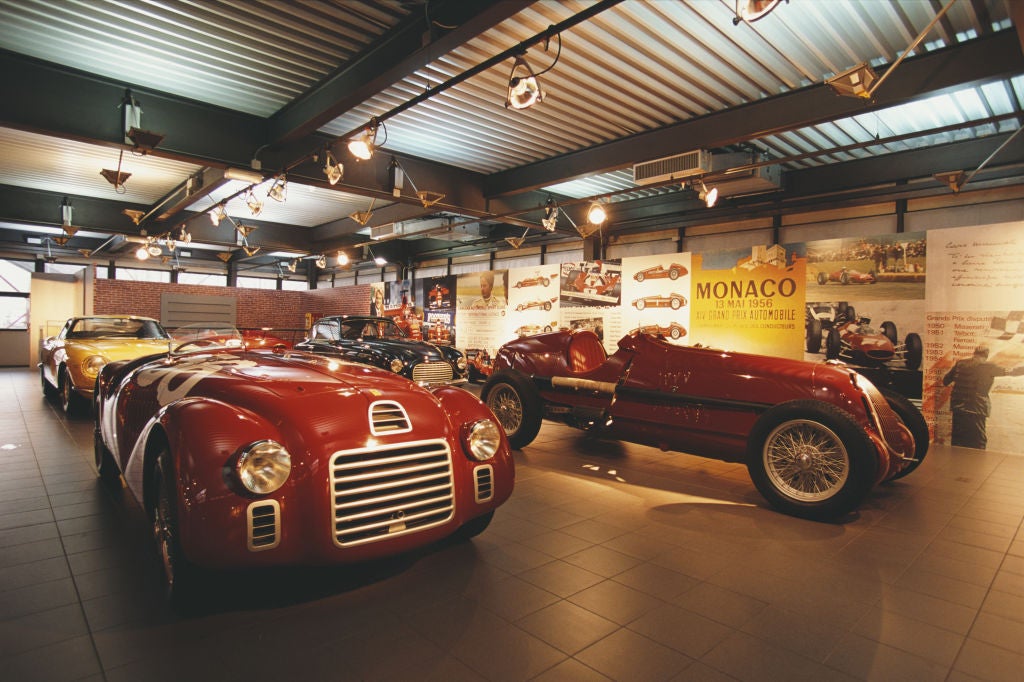
Still, the Lamborghini and Ferrari collections would give him a chance to see important works, he said, “penned by masters like Giorgetto Giugiaro and iconic design houses like Pininfarina and Bertone.”
I lack Caleb’s love of cars but I understand his passion. Fortunately for me in Modena, the Lamborghinis and Ferraris were so stunningly dynamic, with such eye-popping design elements, that I remained engaged nearly the entire day.
We started at the two-story Museo Lamborghini next to the company’s factory in Sant’Agata Bolognese, almost half an hour east of downtown Modena (although it’s presumably quicker in a Lamborghini). There were no factory tours or guides available in August, which left us to focus on the cars.
The exhibit started with early, less showy, Lamborghinis, such as the 400 GT 2+2 from 1966, which was the company’s second model – it looked luxurious but not particularly sporty. But we quickly came to the slinky Miura, which Caleb called “one of the most beautiful cars of all time,” notable for its signature “eyelashes” around the headlights. (The museums rotate the cars they have on display, although many of the true classics are consistently exhibited.)
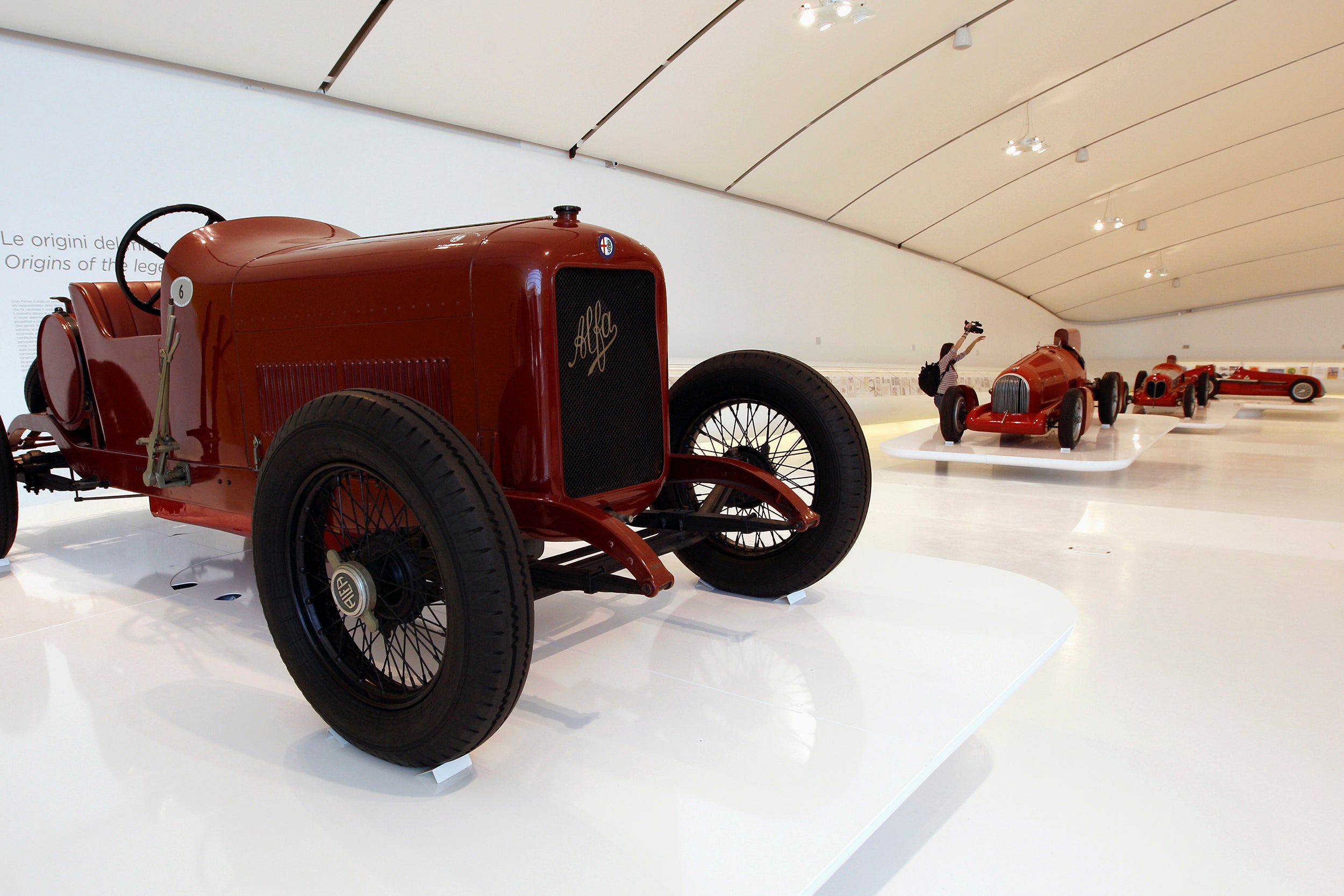
Nearby is the Countach, with its low-to-the-ground, wedge-shaped front, massive hood and large vents that make it look futuristic even today. Back in the Seventies and Eighties it became an aspirational icon (or symbol of decadent excess), showing up in films from Cannonball Run to Rain Man and on posters that adorned nearly as many teenage boys’ walls as the one of Farrah Fawcett in her red bathing suit. Its successor, the menacing-looking Diablo with its massive wing in back, became the first 200mph Lamborghini; two models are on display here.
The first floor also features a few oddities like the LM002, a Humvee-like SUV made from 1986 until 1992. Caleb called it polarising. He and Lucas were seduced by its macho showiness but Time magazine once listed it among the 50 worst cars ever. I found its ungainly mix of obscene luxury and militaristic design off-putting even before I learned that Saddam Hussein’s deplorable son Uday had owned one.
The second floor had newer mainstream models (as mainstream as these cars get) like the Gallardo and a bright orange Murcielago, which was the ultimate supercar of the early 2000s – Bruce Wayne drove one in Batman Begins, and a rap song, “Mercy”, featuring Kanye West is devoted to it.
This floor also featured limited production runs and concept cars (never sold to the public) that were so outlandish they left in the dust any concern I had about the exhibit’s becoming redundant.
The most memorable was the Sesto Elemento, named because carbon is the sixth element and carbon fibre – a crucial advance in supercar design – keeps the car’s weight down to just a ton, helping it reach 100kph (62mph) in 2.5 seconds. The dazzling black-carbon fibre surface features red accents in the hexagonal holes on the engine cover and on the dramatically sculpted hood. Nearby was the Egoista concept, a single-seater that looks like a plane, with an unusual split rear spoiler design that comes to a point.
The museum’s gift shop includes a showroom so you can splurge for a real car as a souvenir; other big ticket items include carbon fibre luggage that runs into five figures. Caleb settled for a shirt and a pencil.
Back in Modena, the Museo Enzo Ferrari is housed in a striking building designed by Czech architect Jan Kaplicky, with a curving glass front and a streamlined yellow roof – the colour of the company’s logo –with incisions that look like a car’s air intake vents. There are secondary displays in a 19th-century brick building that housed Ferrari’s father’s workshop.
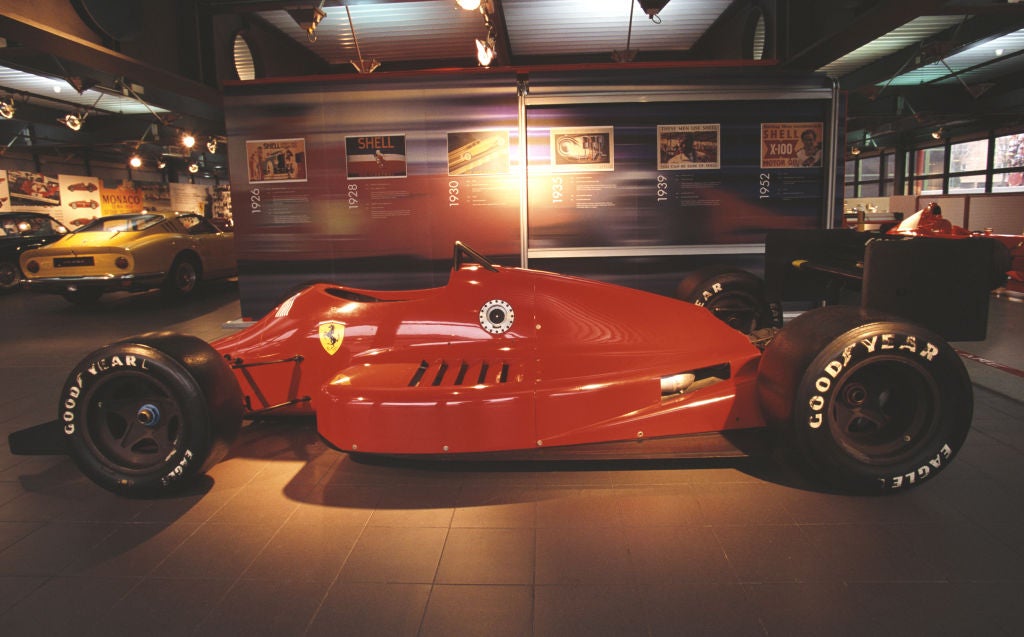
The museum offers detailed history panels, annually redesigned exhibitions and video presentations on a huge wall. The videos we saw were more a distraction than an enhancement, although these, like the cars, are changed regularly.
We refuelled with lunch in the museum’s stylish restaurant before heading to the main hall. The history panels tell Ferrari’s story, from his racing days through his years working for Alfa Romeo before starting his own company after the Second World War.
The first car was a 1948 effort, with two rows of seats, that looks far closer to a Packard than the slick showstoppers like the ones Sonny Crockett sped around in on Miami Vice in the 1980s. But the exhibit quickly jumped to flashier models, like a 1984 Testarossa with its side strakes and horizontal design elements that make it look impossibly low and wide.
My boys drooled over this model but Caleb had a mixed reaction to the unusual F100 R concept car nearby, with its curved windshield and angular slices holding three levels of headlights. “I spent a lot of time standing there trying to decide whether I liked it or not and I still don’t know,” Caleb says later. He laments the bland surfaces of the 456 GT from 1992 that “could have been made by any car company.”
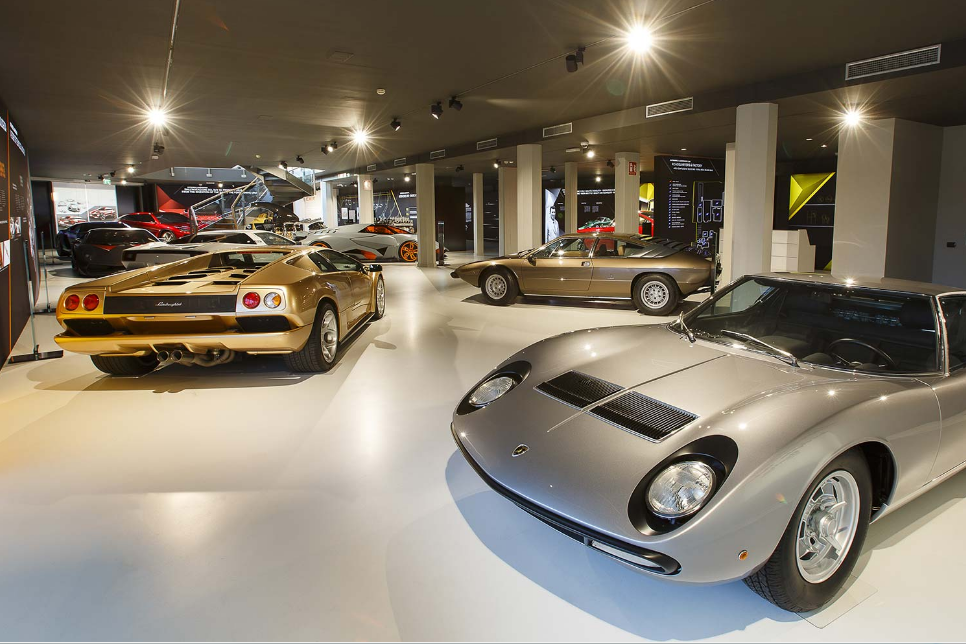
But there were plenty of other cars to rev them back up like the 2-ton 612 Scaglietti and the Ferrari 458 from 2009, which Caleb called “the Testarossa of my childhood,” with its seductive rear haunches and the stylish vents near the tail and headlights.
Perhaps most impressive in this sea of red was the collection of Ferrari’s “halo cars,” their ultra-sleek, top-of-the-line models from the 512BBi and 288 GTO of the 1980s to the more recent Enzo and the hybrid LaFerrari.
For racing fans the real attraction is the Museo Ferrari Maranello, about a half-hour southwest of its sibling in the town where Enzo Ferrari moved his factory when Modena was being bombed during World War II.
This features a Formula One Hall of Champions and a permanent exhibit on the race cars, which includes insights into the evolution of safety and other industry battles as well as a special edition Ferraris like the SP12EC, inspired by the 512BBi and commissioned by guitar legend Eric Clapton.
This feels like a modern museum, offering the chance to get your photo taken inside a Ferrari (a too-expensive, too-cheesy souvenir for our tastes) and interactive experiences like the “Tyre Change” pit stop experience for big groups and a chance to drive an F1 Simulator, which my boys eagerly took on. The concentration required for the seven-minute “race” was so intense they were drained afterward.
Oh, and there was a little something special for me too, although I had to wait until the next morning for my interactive experience. Ferrari museum ticket buyers are offered the chance to tack on a 15-minute driving session on the Autodromo di Modena, a track once used for F1 races and by Ferrari, Lamborghini and Maserati for testing cars. (Some promised goodies did not materialise – no “hostess” to welcome us, no hot food selection and no “professional driver to talk through the track’s characteristics and the safety precautions required.”)
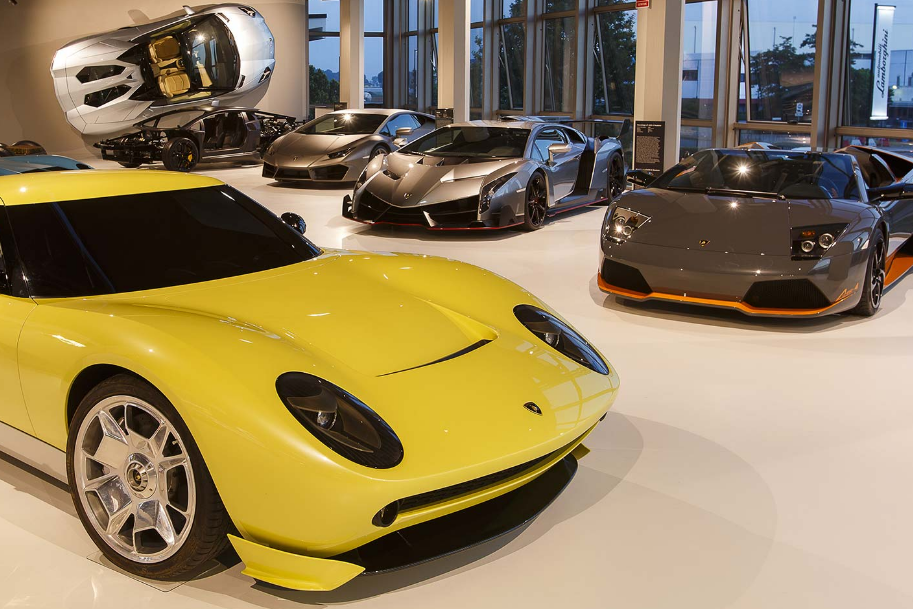
You can rent a Ferrari for a small fortune or take your own car out on the track. Seemingly everyone in Italy drives a tiny Fiat, which would probably handle the outrageously tight and frequent curves with aplomb. We, however, had rented a Lancia Voyager minivan to fit all six of us on our travels. Not exactly a supercar.
I was allowed one passenger at a time. My mum and stepfather refused but my wife Sharon went on my first lap before yielding to the boys, who encouraged me to push the limits as I took turns harder and faster each lap, the car shuddering, the tires screeching.
While the museums gave me a fuller appreciation for the thought and artistry that goes into the design of supercars, it was my morning on the track that made me fully appreciate the appeal of driving one.
Maybe one day.
If You Go
Museo Enzo Ferrari, Via Paolo Ferrari, 85, 41121 Modena; musei.ferrari.com/en/modena
Museo Ferrari Maranello, Via Alfredo Dino Ferrari, 43, 41053 Maranello; musei.ferrari.com/en/maranello
Tickets for adults are €16 (£14) for each museum or £23.50 for a combined ticket.
Museo Lamborghini, Via Modena, 12 40019 Sant’Agata; lamborghini.com/en-en/experience/museum
Tickets for adults are €15.
© New York Times
Join our commenting forum
Join thought-provoking conversations, follow other Independent readers and see their replies
Comments